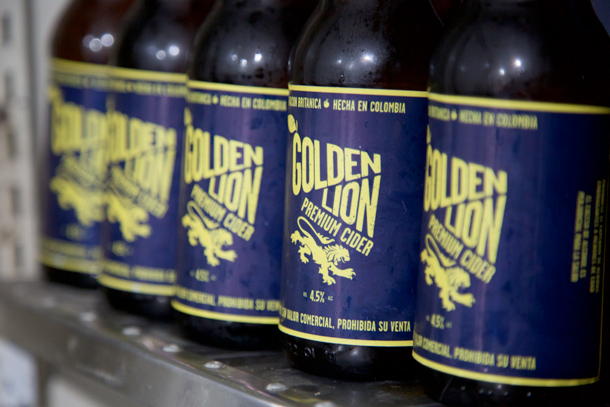 Cooking Taichi
Cooking Taichi
Carrera 14 #93-14
Food: 5/5
Service: 5/5
Atmosphere: 3/5
Value for Money: 3/5
According to its website, Cooking Taichi prides itself on offering a truly authentic Chinese dining experience, employing native chefs from four different regions of China. So it was with lip-smacking anticipation that I arrived at the neon-lit entrance of this two-floored restaurant located on the fringes of the Parque 93.
While its name may suggest a place of meditative contemplation, in reality Cooking Taichi is a pretty swanky affair. The restaurant boasts a stylish bar area, a fine wine and spirits selection, a number of fully-equipped VIP function rooms, spacious dining areas on two floors and an outdoor smoking area the size of a small restaurant.
The restaurant also doubles up as a Chinese cultural centre, filled with historically significant items. This led to a slightly surreal offer from the restaurant staff to dress me up in traditional emperor’s clothes and take my picture on a replica throne displayed in the central area.
Aside from that amusing moment of cultural kitsch, dining out at Cooking Taichi proved both highly tasteful and tasty. Artfully placed Chinese shutters, framed pictures of Chinese calligraphy and ornate wooden tables and chairs imported directly from China lent an air of elegance and authenticity to the experience.
The waiters, immaculately dressed in traditional robes, hovered attentively nearby and the affable floor manager, Kevin, kept an ever-watchful eye on proceedings.
Such details, along with the perfectly starched tablecloths and spotless cutlery, contributed to an elegant, if slightly formal, dining atmosphere, perhaps more suited to business meetings.
Cooking Taichi’s extensive menu offers food from various regions of China, including its better-known Cantonese and Szechuan cuisine. I plumped for the chef’s specials: delicately flavoured Wanton soup followed by delectable morsels of Dim Sum.
However, the jewel in the emperor’s crown was the crispy Peking duck (note: duck needs to be ordered 24 hours in advance, though it’s definitely worth the forward-planning). Cooked to perfection, the succulent pieces of meat came apart from their crackly skin with minimal fuss and maximum flavour.
A word of warning: be prepared to loosen those purse strings, as Cooking Taichi’s prime location is reflected in its menu prices.
All in all, however, this is a culinary experience fit for an emperor!
By Robin Davies
 Capital Caribbean cuisine
Capital Caribbean cuisine
Anna Weldon explores Bogota’s Caribbean food festival to get a flavour for the coast’s culinary delights
Bogota residents could feel the coastal heat last weekend without even having to leave the mountains’ confines. But there weren’t any waves or sandy beaches in the nation’s capital, rather an array of Caribbean cuisine.
The two-day gastro fest was staged in La Aldea Nicho Cultural, an artful venue in La Candelaria. Featuring a variety of foods from Colombia’s Caribbean coast, the Festival Gastronomico Cartagena de Indias 2015 offered bogotanos an opportunity to try other Colombian culinary delights while listening to typical coastal music.
La Aldea housed the event perfectly. The space created an open area filled with quirky tables and chairs where patrons sat and enjoyed the Caribbean flavours, which ranged from COP $1,000-10,000.
Featured on the menu as the primary lunch option was Mote de Queso, a delicate soup made primarily with cheese and yams. The powerful cheese flavour makes it a surprisingly tasty dish, despite its appearance.
The menu’s second, and clearly most popular, dish was a sizable spread featuring fish soup, fried fish, coconut rice, patacón and a small salad. The fish plate certainly had more flavour than its cheesy counterpart. It was salty, but not overly seasoned, giving the fish a nice natural taste that balanced well with the coconut rice and salad. If paired with an Aguila, it would seem almost identical to a beachy meal on the coast.
Apart from the menu’s two main options, the gastro fest featured Sancocho de Pescado and smaller snacks like arepa de huevo, carimañola and empanada de carne to satisfy any further cravings.
The desserts were a variety of slightly disappointing frothy puddings with different flavours ranging from tamarind to coconut. The tamarind dessert had a tart taste that wasn’t particularly enjoyable, and the texture was more like a saucy jam than an edible dessert. There were, however, more desserts on offer that were less bizarre and tastier, such as dulce de coco con leche.
Indulging in the food had its obvious advantages, but the event gave guests the opportunity to go one step further and learn the art of cooking. The gastro fest’s biggest draw was the one-hour workshop each day. Attendees had the opportunity to learn the fundamentals of coastal cooking, which they can no doubt now apply in their own kitchens.
Although the Caribbean gastro fest was no trip to the beach, it was a great chance for locals who hadn’t left the city for the festivo to get a taste of the coast.




